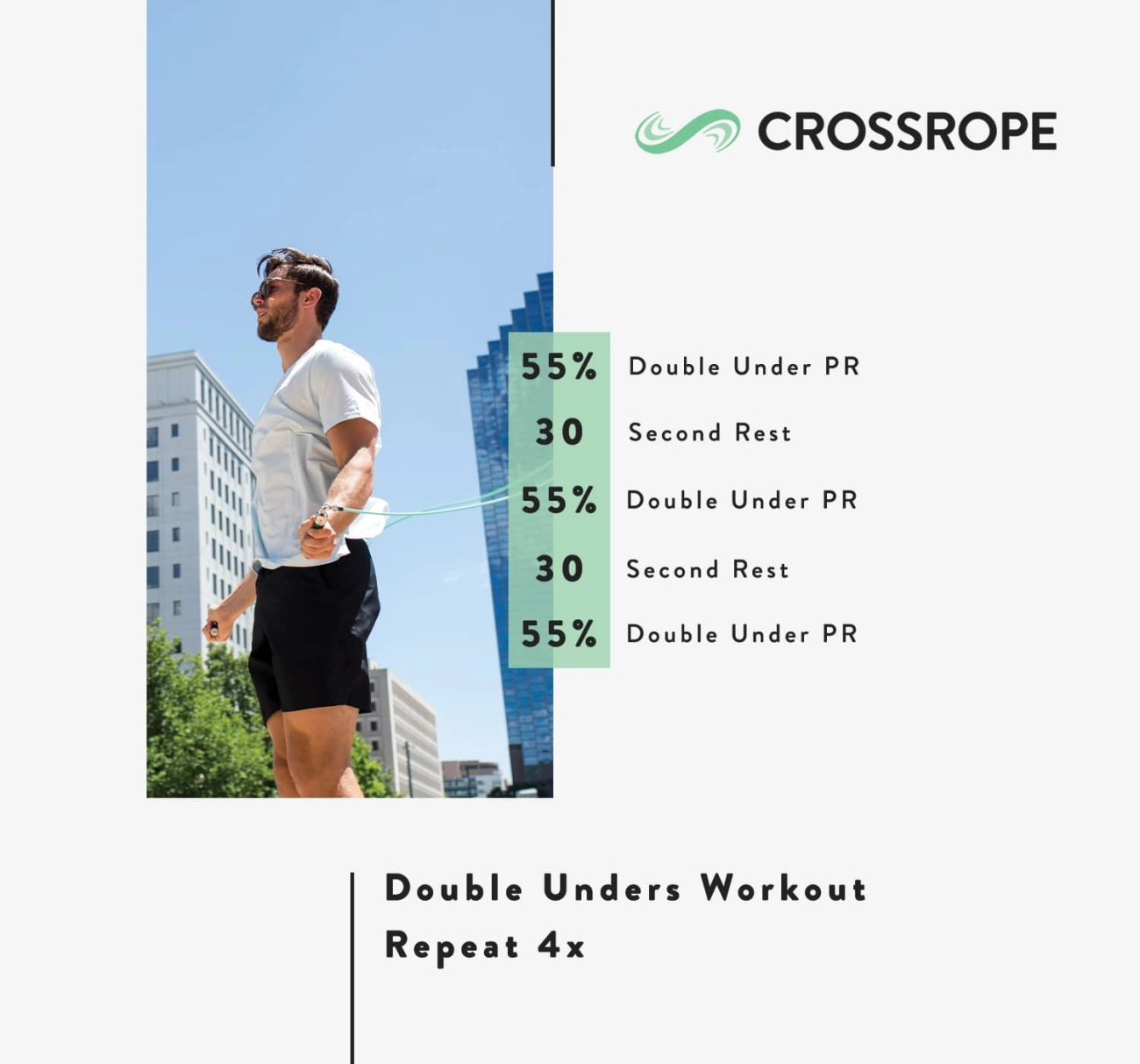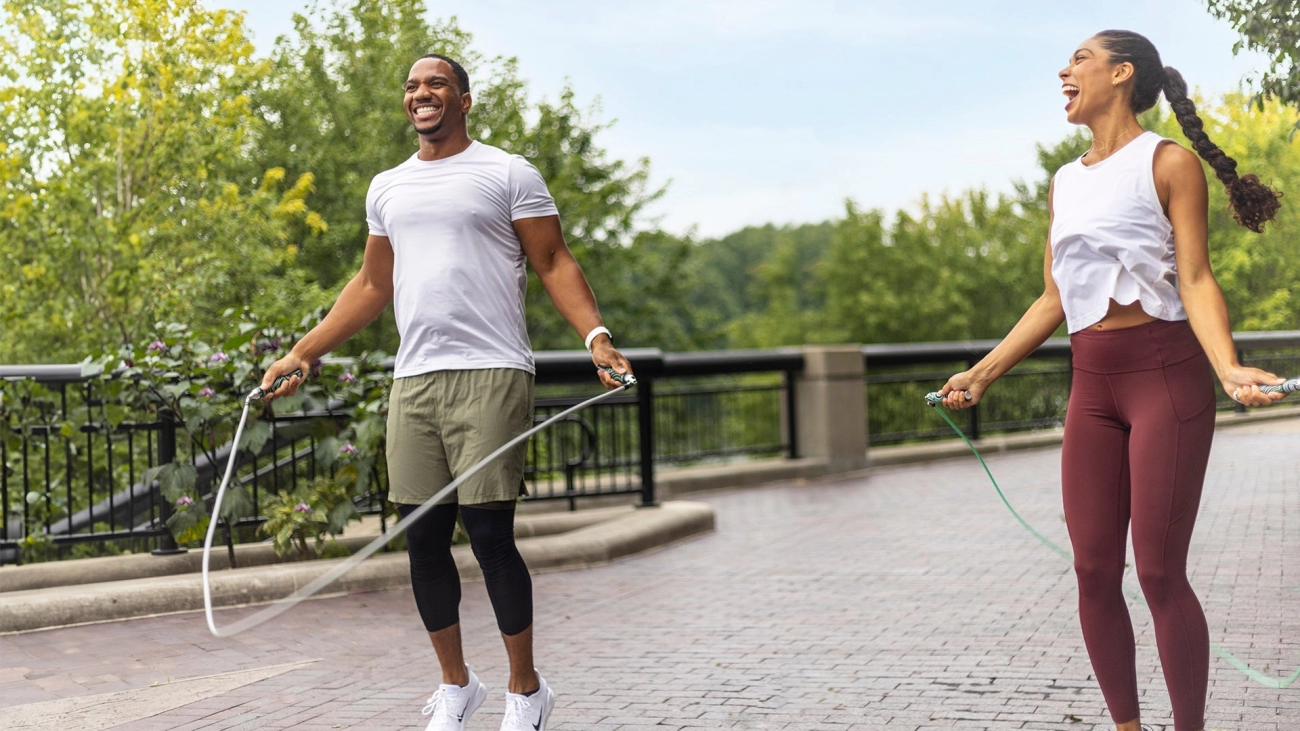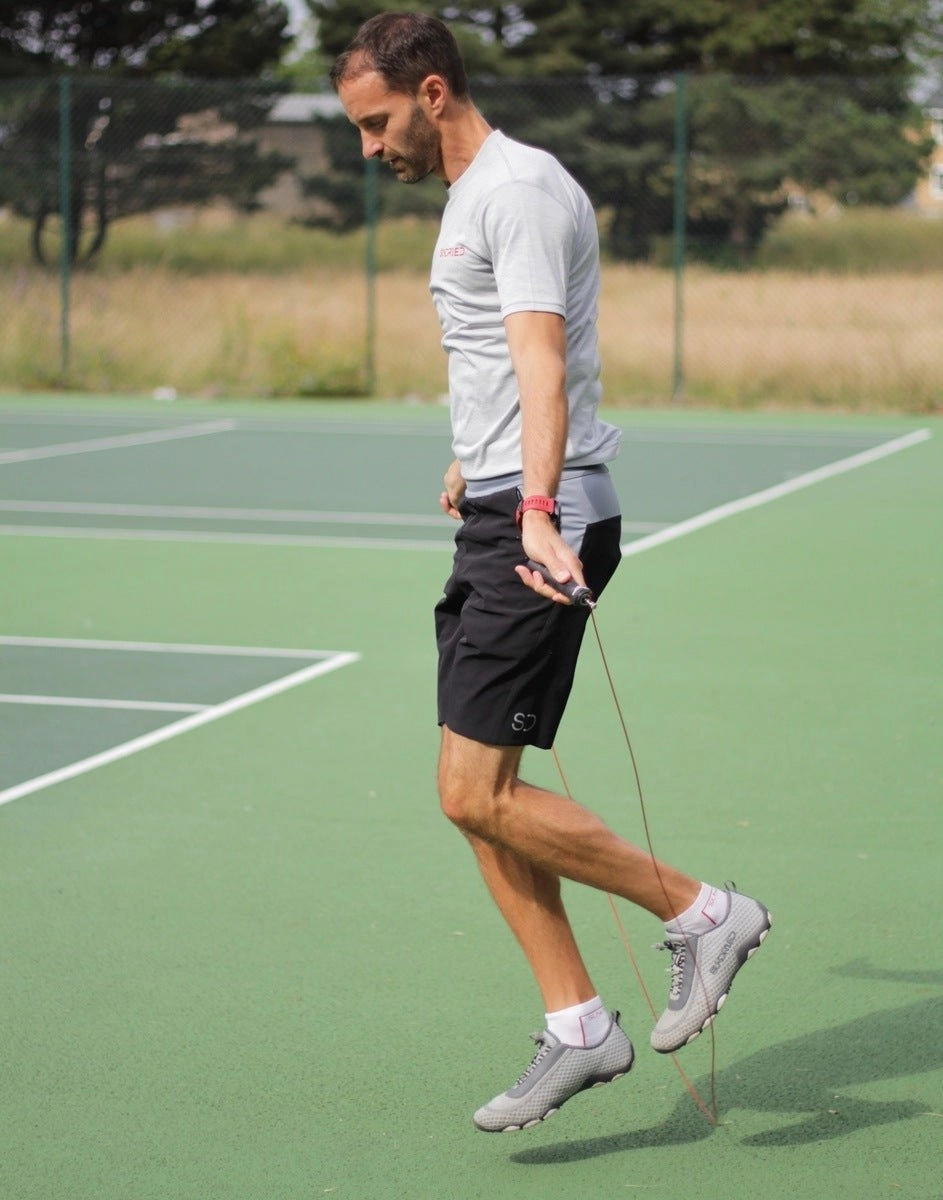Are you ready to level up your jump rope game and finally nail the elusive Double Under jump rope? If you’ve been stuck at single jumps or struggling with timing, you’re not alone. Mastering how to do a Double Under jump rope takes practice, the right technique, and a bit of insider know-how.
In this complete guide, we’re breaking down everything you need—from the perfect rope and beginner drills to common mistakes and pro tips—to get you spinning twice under your feet in no time. Whether you’re a fitness newbie or looking to sharpen your cardio routine with a powerful move, this guide has got you covered.
Ready to jump in? Let’s get started!
What is a Double Under Jump Rope
A Double Under is a jump rope move where the rope passes under your feet twice with a single jump. Unlike a standard single jump, where the rope completes one full rotation per jump, a Double Under requires you to spin the rope faster and jump higher, making it a more advanced and dynamic skill.
Visual Explanation of a Double Under
Imagine jumping once, but spinning the rope twice before you land. Your body needs to coordinate a higher jump and quicker, controlled wrist movements to get the rope around your feet two times in midair. This requires greater speed, timing, and rhythm compared to basic jump rope moves.
How Double Unders Differ from Other Jump Rope Moves
- Single Jump: One rotation of the rope per jump, typically low and steady.
- Double Under: Two rope rotations with one jump, demanding faster wrist movement and higher jumps.
- Other Variations: Moves like criss-cross or high knees focus on different foot or arm patterns, but Double Unders emphasize speed and coordination.
Common Uses in Workouts
Double Unders are widely used in fitness routines that boost cardiovascular endurance and agility, including:
- CrossFit: A staple skill in CrossFit workouts, Double Unders increase intensity and improve coordination under fatigue.
- HIIT (High-Intensity Interval Training): Incorporates Double Unders for brief bursts of high-speed cardio, enhancing explosive power.
- Boxing Training: Helps develop footwork agility, timing, and quickness—key attributes for boxers.
These exercises make the Double Under a powerful tool for building cardio fitness, coordination, and athletic performance across many sports and training styles.
Equipment Essentials Selecting the Right Jump Rope for Double Unders
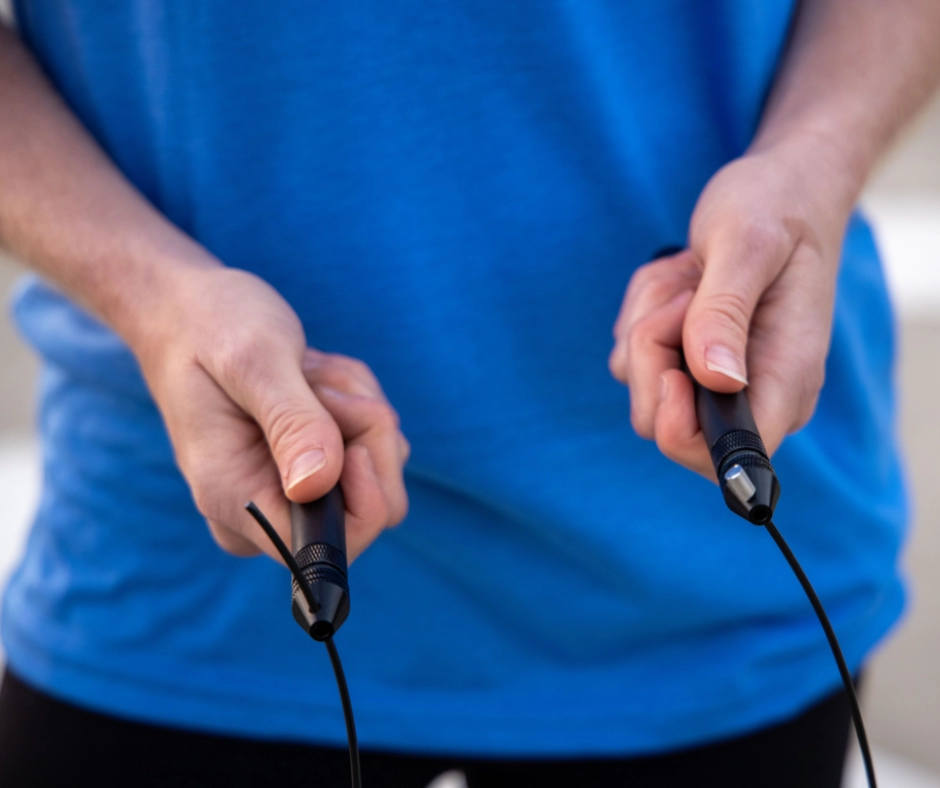
Choosing the right skipping rope is crucial when learning and mastering double unders. Using the wrong rope can slow your progress, cause frustration, and even lead to injuries. Here’s what you need to know to pick the best rope for your double under jump rope technique.
Why the Right Jump Rope Matters for Double Unders
Double unders require the rope to spin twice under your feet with one jump. This means speed, control, and durability are key. A poorly fitted or heavy rope will make it hard to maintain rhythm, timing, and proper wrist action.
- Speed: The rope has to rotate fast enough to complete two turns per jump.
- Durability: Double unders put more wear and tear on ropes, so a tough material extends rope life.
- Grip: Handles that offer a good grip allow precise wrist control crucial for quick rope spins.
- Weight & Balance: A rope that’s too heavy or uneven causes timing issues and fatigue.
Recommended Rope Types Lengths and Materials for Double Unders
For double unders, the most popular rope choices include:
- PVC speed ropes: Lightweight and flexible, offering fast rotations perfect for high-speed movements.
- Cable ropes with coating: Durable and smooth, they glide easily and last long – great for frequent double under practice.
- Beaded ropes: Usually heavier and slower, better for beginners learning rhythm but not ideal for advanced double unders.
Length matters:
- The rope should reach about your armpits when stepping on its center.
- Slightly shorter ropes suit double unders better because they reduce the distance the rope travels, allowing faster spins.
Why JumpRopeWholesale Ropes Are Ideal for Double Unders
As a leading skipping rope manufacturer, JumpRopeWholesale offers jump ropes specifically designed for double unders, meeting the needs of athletes across CrossFit, HIIT, and boxing training in the U.S.
- Durability: Our ropes use premium-grade PVC cables or coated steel designed to handle fast rotations and daily training.
- Speed: Lightweight materials and optimized rope thickness ensure you can spin the rope faster, key to nailing double unders.
- Grip and Control: Handles are ergonomically designed with anti-slip materials, giving you better wrist control for quick, precise rotations.
- Customization: We offer various rope lengths and handle styles so you can find the perfect fit for your height and skill level.
- Made for U.S. Customers: We consider local training styles and preferences, ensuring our ropes perform well in American gyms, home workouts, and competitive environments.
Using the right rope from JumpRopeWholesale ensures smooth double unders, fewer tangles, and less wrist fatigue — helping you focus on your form and speed without equipment limitations.
Prerequisites Skills and Conditioning for Double Under Jump Rope
Before you jump into learning the Double Under jump rope technique, it’s key to have a solid foundation. Skipping Double Unders demands more precision and speed than your standard jump rope moves, so prepping your body and skills is a must.
Basic Jump Rope Skills Needed
- Consistent Single Jumps: Be comfortable with continuous single unders. Mastering a steady rhythm helps you build the timing necessary for Double Unders.
- Rhythm and Timing: Double Unders rely heavily on smooth pacing. You need to develop an internal sense of timing to coordinate your jumps and rope spins without pauses.
Physical Attributes to Develop
To perform clean Double Unders, focus on building these attributes:
- Wrist Speed: The rope needs to spin twice per jump, so sharp wrist movements are essential. Fast, controlled wrist flicks—not big arm swings—keep the rope moving efficiently.
- Timing: Jumping and spinning the rope perfectly sync together. Your timing must be tight to avoid mistimed rotations that cause rope tangles or misses.
- Calf Strength and Ankle Stability: Your calves power your jump height while keeping you light on the balls of your feet. Strong calves also help reduce fatigue and improve landing stability.
Conditioning Exercises to Prepare Your Body
Preparing your body for Double Unders goes beyond practicing jumps. Focus on these conditioning moves:
- Jump Rope Single Unders at High Speed: Boost endurance and get your wrists used to quick, light rotations.
- Calf Raises: Strengthen calf muscles by doing both seated and standing raises. Add weights for extra challenge.
- Wrist Circles and Flicks: Warm up and build wrist flexibility and strength through controlled wrist rotations.
- Plyometric Training: Exercises like box jumps or jump squats can build explosive leg power to help you jump higher without losing control.
Building these skills and conditioning your body beforehand makes the transition to Double Unders smoother and reduces frustration. When you’re ready, you’ll find it easier to keep rhythm, maintain speed, and jump with confidence.
For more on jump rope basics and conditioning, check out our Skipping Rope Side Swing Tutorial and explore our range of quality ropes to support your training at JumpRopeWholesale.
Step by Step Guide on How to Do a Double Under Jump Rope
Mastering the double under jump rope technique takes practice, but breaking it down makes it easier. Here’s a clear step-by-step guide to help you get that double rotation every jump.
Proper Stance and Posture
- Stand tall with a slight bend in your knees. This helps absorb impact and keeps your jumps controlled.
- Keep your feet close together, landing softly on the balls of your feet—not flat or heels.
- Maintain a straight back and relaxed shoulders to avoid tension that can throw off timing.
Hand and Wrist Positioning
- Hold the rope handles lightly at hip height with your elbows close to your body.
- The power for rope spinning comes mostly from your wrists, not your arms.
- Keep your wrists relaxed and flick the rope in controlled, quick turns for speed and accuracy.
Jump Height and Timing
- You need to jump just high enough for the rope to pass under twice—about 8 to 12 inches off the ground.
- Jumping too high wastes energy and slows you down; too low can cause the rope to catch your feet.
- Focus on springing up from your calves and ankles, not your knees or hips. This helps preserve energy and maintains rhythm.
Rope Spinning Technique
- To get that double rotation per jump, spin the rope faster by snapping your wrists twice as quickly as in a single jump.
- Keep the rope close to the ground to reduce air resistance, allowing quicker turns.
- Use small, controlled movements rather than big swings—precision beats power here.
Breathing and Rhythm Tips
- Maintain a steady breathing pattern—inhale through your nose and exhale through your mouth to keep oxygen flowing.
- Find a rhythm by counting or tapping your breath: two quick spins, one jump.
- Consistency helps your timing and prevents early fatigue during longer sets.
By focusing on these elements—stance, wrist action, controlled jumps, rope speed, and breathing—you’ll build solid skills for clean, efficient double unders. Slow practice with rhythm drills will improve accuracy before increasing speed.
Common Mistakes to Avoid When Learning Double Under Jump Rope
Mastering the double under jump rope technique takes practice, but avoiding common errors can speed up your progress and keep you safe. Here are the key mistakes people make and how to fix them:
Jumping Too High or Too Low
Many think they need to jump super high to clear the rope twice, but jumping too high wastes energy and ruins timing. On the flip side, jumping too low means the rope can’t spin around twice before you land.
- Aim for a controlled jump about 2-3 inches off the ground — enough height to let the rope pass twice, but not so high that you lose rhythm.
- Keep your jumps light and soft on the balls of your feet to reduce impact.
Over Rotating the Rope
Spinning the rope too many times or too fast can cause it to tangle or trip you up. Over rotation often happens when you use the whole arm instead of just your wrists.
- Focus on wrist speed and control to get a smooth, consistent double rotation without overspinning.
- Practice wrist-only spinning drills to build proper rope rotation speed.
Using Arms Instead of Wrists
Using big arm movements burns energy and wrecks your timing. This often leads to uneven rope swings and fatigue.
- Keep your elbows close to your sides and use small wrist circles to turn the rope.
- Remember, the power for double unders comes from your wrists, not your arms.
Landing Improperly and Risking Injury
Landing flat-footed or stiff-legged can cause knee and ankle strain, slowing your workout progress or causing injury.
- Land softly on the balls of your feet with slightly bent knees to absorb the impact.
- Maintain good posture throughout to reduce stress on joints.
Avoiding these common mistakes will help you develop smooth, efficient double unders while keeping your workouts injury-free and fun. With consistent focus on timing, wrist control, and proper jumping, you’ll nail your double under jump rope technique faster than you think.
Practice Drills and Progressions to Master Double Unders
Mastering the double under jump rope technique takes consistent practice and smart drills. Breaking down the skill helps build rhythm, speed, and control step-by-step.
Single Under Speed Practice
Start by improving your single jump speed. Faster single unders help you develop the timing and wrist speed needed for double unders. Focus on:
- Short, quick jumps with a smooth rope turn.
- Keeping a consistent rhythm and breathing pattern.
- Using your wrists, not your arms, to spin the rope.
Try to do sets of 30 to 50 fast single unders to build endurance and rope speed.
Two Singles and One Double Progressive Rhythm Drills
This drill improves timing and muscle memory for the double under sequence. The idea is to blend singles and doubles in a controlled way:
- Jump two fast single unders.
- Follow immediately by one double under (where the rope spins twice).
- Repeat this pattern, focusing on smooth transitions.
This helps your body recognize the difference in timing and forces needed for double unders versus single jumps.
Wrist Only Rope Spinning Drills
The key to spinning the rope twice during a double under is strong and precise wrist action. Practice wrist-only spinning drills without jumping:
- Hold the rope handles and focus on small wrist rotations.
- Spin the rope at increasing speeds while keeping your arms still.
- This builds the wrist speed and control that’s essential for double unders.
Jump Height Control Exercises
Jumping too high or too low can throw off your double under timing. Control your jump height with exercises such as:
- Jumping just high enough to let the rope pass twice.
- Practicing low, quick jumps that keep you balanced and reduce fatigue.
- Using a mirror or video to check your form and ensure consistent jump height.
Mastering these drills builds confidence and efficiency in your double under workout routine. Stick to them, and you’ll see steady improvement in timing, speed, and control.
Troubleshooting Double Under Challenges and How to Fix Them
Double unders can be tricky at first. If you’re struggling, don’t worry—it’s common to hit some bumps like rope tangling, inconsistent timing, and fatigue. Here’s how to troubleshoot these issues and keep improving your double under jump rope technique.
Fixing Tangling Ropes
Rope tangling happens when your jumps or rope rotation aren’t synced well. Here’s what to check:
-
Adjust Rope Length: Too long or too short ropes cause tangles. Your rope should hit about your armpits when you stand on it. If you need a high-quality rope that adjusts perfectly, check out customizable jump ropes.
-
Focus on Smooth Wrists Movement: Use your wrists—not your arms—to spin the rope. Wrists give better control and reduce erratic swings that cause tangles.
-
Practice Consistent Jump Height: Jump just high enough to clear the rope twice but avoid excessive height that throws off your timing and causes knots.
Fixing Inconsistent Timing and Misses
Missing the rope or messing up timing is a common frustration. Here’s how to fix it:
-
Master Single Unders First: Build solid rhythm and coordination with single jumps before attempting double unders. Speeding up single unders can help transition smoothly.
-
Use Wrist-Only Rope Spinning Drills: Practice spinning the rope with only your wrists while keeping your jumps slow. This drills rope control and helps sync jumps and rotations.
-
Count Your Rope Rotations: Focus on getting two full rotations with one jump. Break the move down: jump, rotate, jump, rotate until timing feels natural.
-
Stay Relaxed: Tension leads to poor rhythm. Keep your body relaxed to avoid jerky movements.
Managing Fatigue During Double Under Sessions
Double unders can be quite demanding, especially in HIIT or CrossFit workouts. Fatigue affects timing and technique, so it’s important to manage it:
-
Take Short Breaks: Rest 15-30 seconds between sets to recover your wrist speed and leg energy.
-
Condition Your Calves and Wrists: Incorporate strength and endurance exercises specific to calves and wrists. This helps sustain proper form over longer sessions.
-
Hydrate and Breathe Right: Staying hydrated and controlling your breathing rhythm keeps your body ready. Exhale during the rope jump phase to maintain oxygen flow.
-
Scale Your Practice: If you notice form slipping, reduce jump frequency or switch back to single unders briefly. Gradual progression prevents burnout.
If you’re serious about mastering double unders, pairing proper troubleshooting with the right gear is key. Using fast, durable ropes like the boxing skipping rope can improve your speed and reduce common issues, helping you build confidence and skill faster.
Incorporating Double Under Jump Rope into Your Workout Routine
Using double unders in your workout can boost your cardio, agility, and overall conditioning. They fit perfectly into routines like HIIT, CrossFit, and boxing training, where speed and endurance matter. Here’s how you can add double unders smoothly and effectively.
Sample Beginner Workout Routines with Double Unders
If you’re just getting started, it’s smart to mix double unders with simpler jump rope moves to build stamina and technique. Here’s a beginner-friendly routine:
- Warm-up: 2 minutes of single unders (steady pace)
- Round 1: 10 double unders, then 30 seconds rest
- Round 2: 15 single unders (fast), 10 double unders, 30 seconds rest
- Round 3: 20 single unders, 15 double unders, 1-minute rest
- Repeat 3 rounds total
This approach helps you ease into the required wrist speed and timing while building calf and core strength.
Benefits of Double Unders in Cardio and HIIT Workouts
Double unders are more than just a jump rope trick—they intensify your cardio workout by upping the heart rate faster than single unders alone. This makes them a favorite for:
- Burning more calories in less time
- Improving coordination and foot speed
- Enhancing lung capacity and cardiovascular endurance
- Boosting overall athletic performance
Incorporating double unders into HIIT rounds (like 30 seconds of double unders, 30 seconds rest) efficiently pushes your limits and speeds up recovery.
Tracking Progress and Setting Realistic Goals
Tracking your double under progress keeps you motivated and helps prevent plateaus. Here’s how to do it:
- Count repetitions: Start with manageable sets (5-10 double unders) and gradually increase.
- Use a jump rope counter app or a simple stopwatch to time intervals and record totals.
- Set short-term goals: For example, “Hit 20 double unders without stops” or “Complete 3 rounds of 15 double unders.”
- Note improvements in consistency and form, not just speed or reps.
By keeping tabs on your reps, timing, and technique, you’ll see steady improvement and make your workouts more effective.
Adding double unders to your routine is a game changer for anyone serious about cardiovascular fitness and coordination. With consistent practice and proper tracking, you’ll gain strength, speed, and endurance right here in the U.S., using the best ropes to help you succeed.
Why Choose JumpRopeWholesale for Your Double Under Training
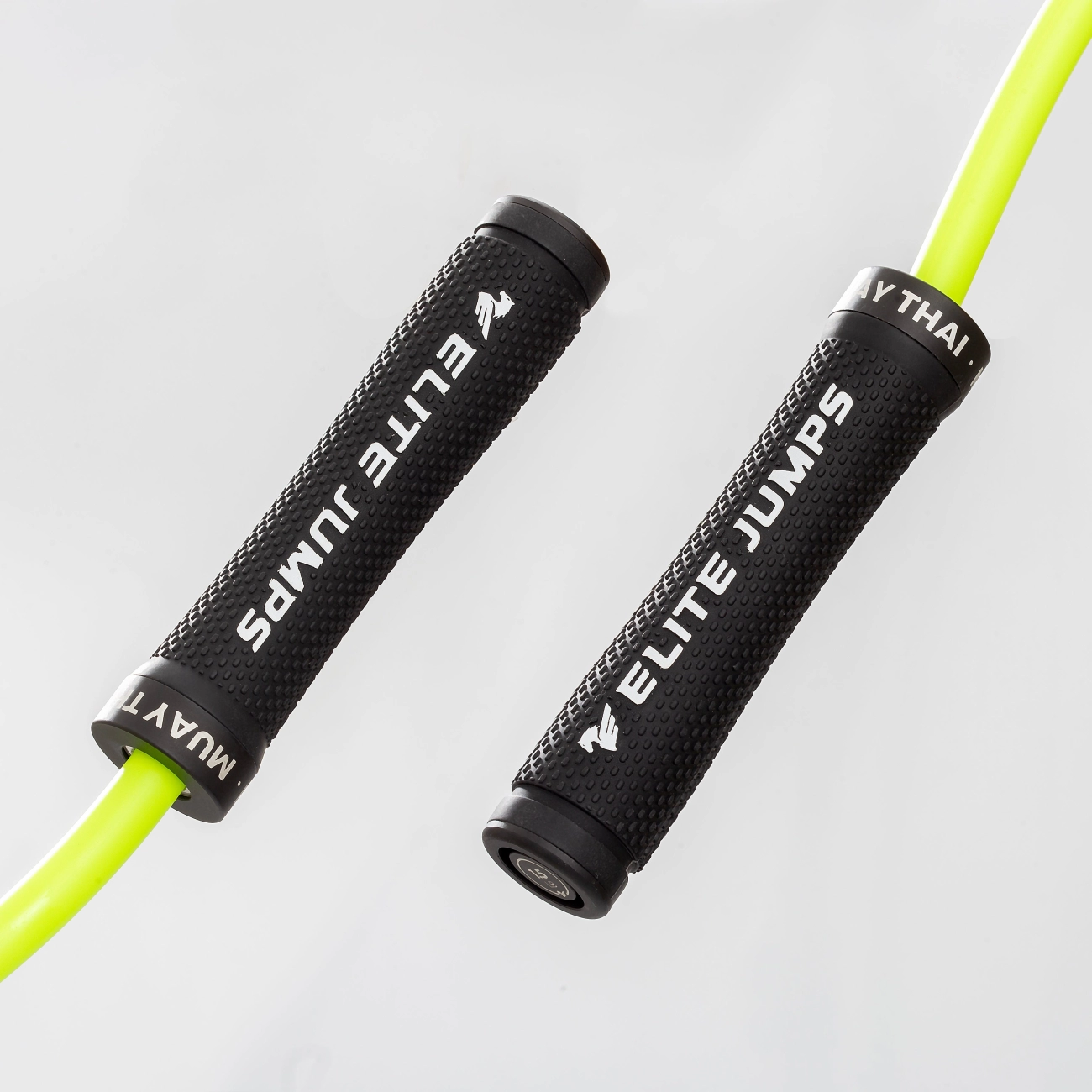
When mastering the double under jump rope technique, having the right rope makes all the difference. JumpRopeWholesale offers premium jump ropes designed for all skill levels, from beginners just learning their rhythm to advanced athletes looking to speed up rope rotation and improve their timing.
Premium Rope Options for Every Level
Whether you’re starting out or training seriously for CrossFit, HIIT, or boxing, JumpRopeWholesale has you covered:
- Speed Ropes engineered for quick rotations to help you nail your double unders
- Weighted Ropes to build wrist strength and improve control
- Adjustable lengths to fit your height and style perfectly
- Materials including durable PVC, polished steel cables, and ergonomic handles to ensure grip and comfort during long sessions
Durability and Rope Technology
One key factor in mastering double unders is reliability. JumpRopeWholesale ropes come equipped with ball-bearing technology that provides smooth, tangle-free spinning perfect for fast, consistent double rotations. This tech reduces rope friction and wear, making the ropes last longer even with daily high-intensity training.
Customization options allow you to tweak handle weight, rope length, and style. This means you can find the ideal setup to improve jump height, wrist speed, and overall timing—crucial for flawless double unders.
Trusted by Customers
Many users in the US fitness community have praised JumpRopeWholesale for their quality, durability, and excellent customer support. Whether you’re addressing common double under mistakes or pushing your speed work, their ropes help you train confidently with less frustration.
JumpRopeWholesale’s reputation as a reliable skipping rope manufacturer makes it a go-to brand when upgrading your gear for double under practice drills or daily cardio sessions.
For a great start, check out their Ball Bearing Skipping Rope—a favorite for diving into double under training efficiently.
Choosing JumpRopeWholesale means investing in ropes built to help you improve your double under jump rope technique faster and with less hassle.
FAQs About Double Under Jump Rope Technique
How long does it take to learn Double Unders
Learning double under jump rope technique depends largely on your current fitness level and jump rope experience. For most people with basic jump rope skills, it takes anywhere from a few days to several weeks of consistent practice to get comfortable with double unders. If you’re new to jumping rope, expect to spend more time mastering the rhythm, timing, and wrist speed needed.
Key tips to speed up learning:
- Practice single jumps at a fast pace to build timing and endurance.
- Use progression drills, like two singles followed by one double under, to develop coordination.
- Stay patient and focus on consistency rather than speed.
What is the best way to count repetitions
Counting repetitions during double under workouts can be tricky because each jump involves the rope passing twice under your feet. To track reps accurately:
- Count each successful double rotation as one repetition.
- Use a mental count or tap your fingers for each completed double under.
- Consider using a jump rope with a built-in counter or a fitness watch to track reps during longer sessions.
- Group your repetitions into sets (e.g., 20 double unders per set) for easier tracking and rest management.
This approach helps maintain focus on form and pace rather than getting lost in numbers.
Can double unders cause injury and how to prevent it
Double unders are high-impact and fast-paced, so there is a chance of injury if you don’t use proper form or train your body adequately. Common risks include ankle, knee, and shin injuries.
How to avoid injury while doing double unders:
- Warm up properly with dynamic stretches and light jumping.
- Use the right rope, like JumpRopeWholesale’s ball bearing ropes, which offer smooth rotation and reduce wrist strain.
- Maintain a soft, controlled landing on the balls of your feet to absorb impact.
- Avoid jumping too high; just enough to clear the rope twice per jump.
- Strengthen calves, ankles, and core to handle the impact.
- Take rest days to let your body recover and prevent overuse injuries.
Following these tips helps you train smart, minimize injury risk, and enjoy the workout benefits of double unders.
For more guidance on building a solid jump rope routine with double unders, check out our beginner skipping rope workout.

